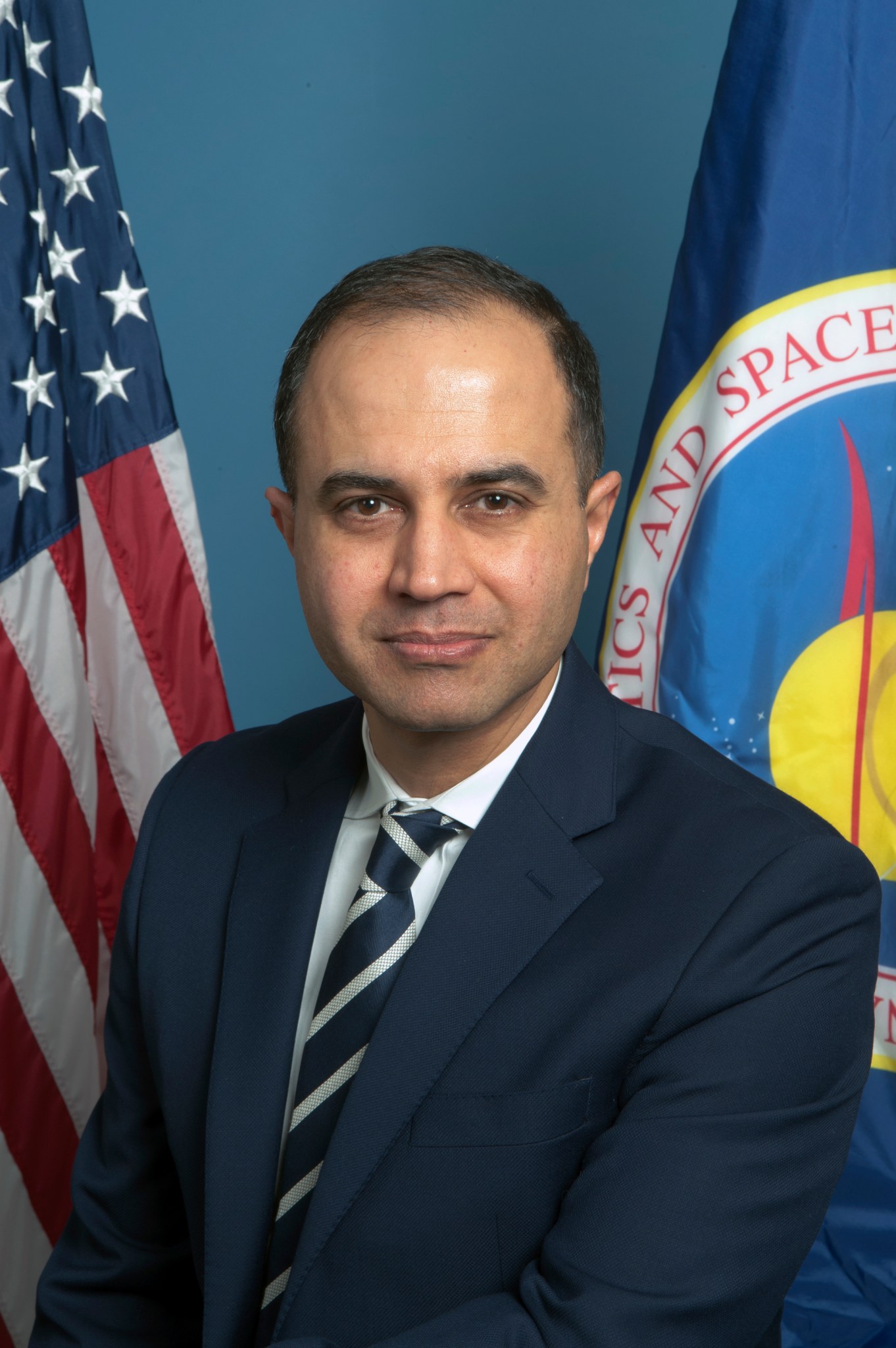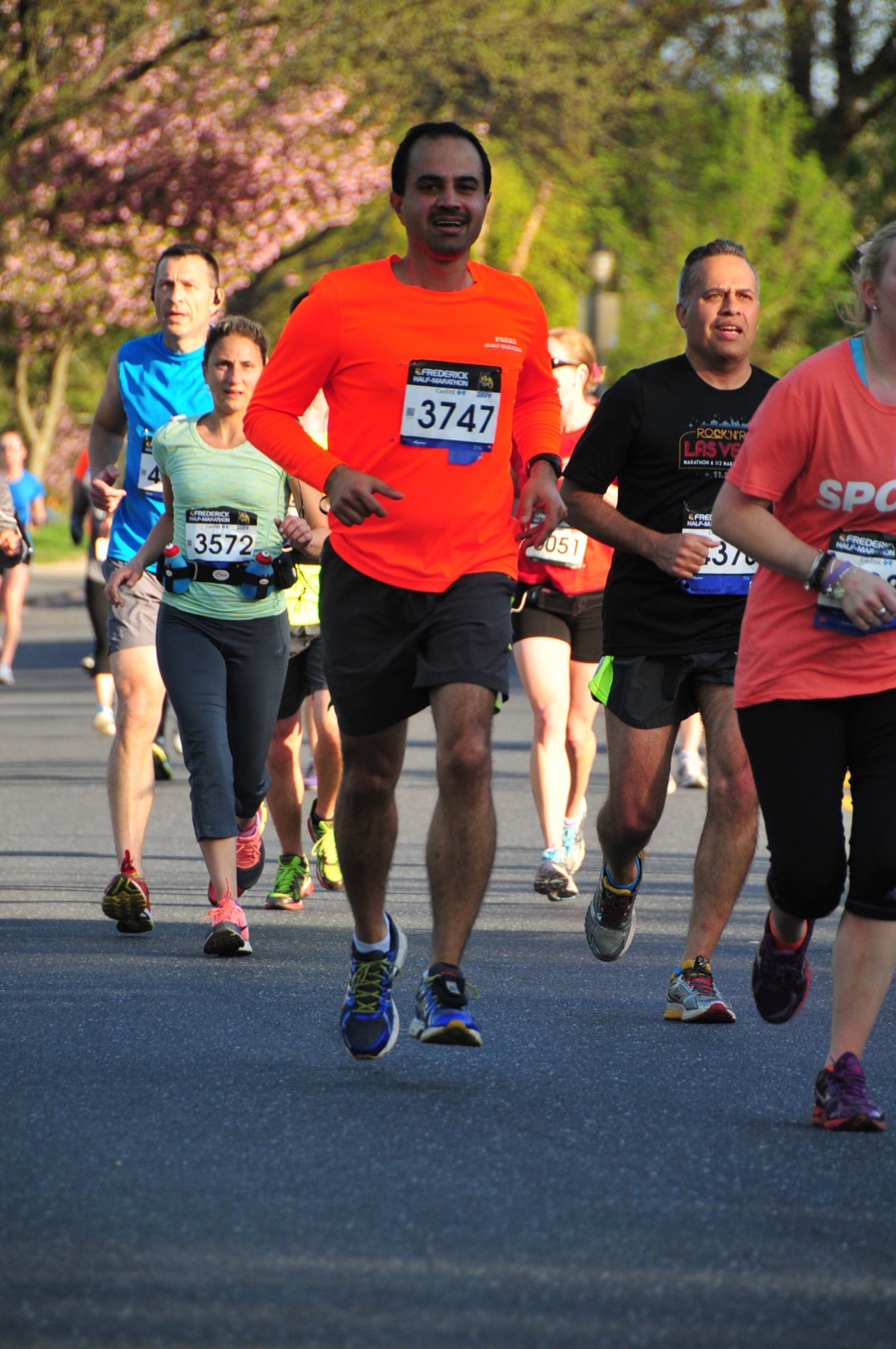Name: Bhanu Sood
Title: Chief Engineer of the Quality and Reliability Division
Formal Job Classification: Aerospace Engineer
Organization: Code 370, Quality and Reliability Division, Safety and Mission Assurance Directorate
What do you do and what is most interesting about your role here at Goddard? How do you help support Goddard’s mission?
In March 2021, I became the chief engineer of the Quality and Reliability Division within the Goddard Safety and Mission Assurance (SMA) Directorate. I now serve as the chief technical adviser to division and directorate managers and the SMA chief engineer on technical matters related to mission risk, mission support and the development of the division’s assurance disciplines. These disciplines include electrical, mechanical and optical hardware systems; software system quality and reliability, calibration, reliability analysis and risk management; and risk management for mission objectives and application environments. I also now manage Goddard’s Technical Standards Program which establishes and administers technical standards and policies as well as NASA and center SMA technical standards, procedures and policy. It also evaluates the cost, performance and schedule effectiveness of SMA technical policy.
Previously, as a commodity risk assessment engineer, I helped Goddard flight projects achieve mission success by identifying, evaluating and communicating risk associated with microelectronics and printed circuit boards. I also provided subject matter expertise to Goddard and the NASA Engineering Safety Center on risks and failures related to microelectronics and printed circuit boards.
Where did you go to school?
I grew up in India. I went to high school in India. In 1996, I got my bachelor’s and first master’s degree in metallurgy from the National Technical University of the Ukraine in Kiev, the university associated with Dimitri Mendeleev – the creator of the periodic table of elements.
Where was your first job?
After graduating, I returned to India to work as an engineer for an American company called Ingersoll Rand (IR). I worked with IR for four years.
What did you do next?
In 2000, I started at The George Washington University for a master’s degree in materials science, which I earned in 2003. While in school, I worked part time and then full time with the Naval Research Laboratory (NRL), where I stayed until 2005.
How did you come to work at the University of Maryland?
In 2005, I went to work at the University of Maryland’s Center for Advanced Lifecycle Engineering (CALCE). This center does research in electronics reliability, life-cycle and reliability assessments.
I have always been interested in electronics materials. My master’s degree was in materials. The processing and creation of new materials and the interaction of materials with lasers and environments always fascinate me. When I found the opportunity at Maryland that allowed me to combine both my academic work and continue the work I was doing at NRL, I did not hesitate. At Maryland, I investigated electronics reliability, physics of failure and their root issues. I stayed at CALCE for 10 years.
While at Maryland, I also developed and taught industry courses in electronics reliability.
In 2012, I started as a part-time doctoral student at Maryland in electronics reliability. I completed my doctorate in 2018 after I started working at Goddard.
How did you come to Goddard?
In 2015, I heard about a new position at Goddard. I started at Goddard in the same position I now have. I enjoy my work. I knew many of the people at Goddard before I started working here. Some were my former students. I had collaborated with others, a few of whom were on my interview panel.
My first week was very exciting. I was asked to join an anomaly review board to investigate an in-orbit anomaly. Not only did I have to come up to speed with the various mechanisms and electronics specific to that instrument, I had to guide the team on how to duplicate the anomaly on the ground to uncover the root cause behind the anomaly. Through the years, my work has remained just as exciting as my first week.
What is unique about your position?
I have the unique privilege of working with all the flight and ground projects on center. I identify risks associated with microelectronics and printed circuit boards for all the projects. Every project uses them. This gives me a unique perspective about Goddard.
The projects we have come in different flavors with different risk tolerances. Each mission has a different risk posture with a specific risk classification.
My job is to identify, evaluate and communicate these risks to management. The project management looks into its own resources to make the risk decisions. We call management the risk owners.
On a personal level, are you a risk-taker?
I consider myself more of a risk manager. I view myself as someone who has a knack for identifying and managing risks rather than simply taking risks. Preparation and mitigation are the keys to managing risk.
What do you tell people you mentor?
Throughout my career, I have mentored many people, including high school students, undergraduate students, and new and developing professionals at Goddard. I tell them to ask questions and learn the basics. I also tell them that it is critical to not simply passively listen, but to actively challenge assumptions. Doing this brings confidence.
I also tell them my own story: how I became who I am. I encourage them to chart their own learning path, to learn by independent investigations. I am there to help them.
Who is your engineering hero?
I admire my advisor at the University of Maryland, Professor Michel Pecht, who is famous for his work in electronics reliability and physics failure. I have seen firsthand how he challenges leaders and chief technical officers of major engineering companies regarding their assumptions and explains why they should be looking at something from a different perspective.
We still meet regularly. I am pleased to say that I nominated him to be a fellow of the American Society of Metals International. He became a fellow in January 2020.
Is there something surprising about you that people do not generally know?
I run marathons and half-marathons. Running gives me physical exercise, but more importantly, it helps me focus and develop a strategy to achieve in completing that particular run. I like the sense of achievement that follows completion. I am delighted that my eldest child is now joining me for short runs and is on the running team of her middle school.
I also have two patents.
If you could meet and talk to anybody, living or dead, who would it be and what is the first thing you’d ask?
I would talk to Robert Goddard, a rocketry pioneer and the namesake of our center. He has many firsts in the field of rocketry, but we also know from various books and sources that he did not like to take a lot of risks. I would ask him if he thinks we are taking the right amount of risk in achieving our missions. I would also ask him what advice, if any, he’d have for our project managers.
By Elizabeth M. Jarrell
NASA’s Goddard Space Flight Center






























